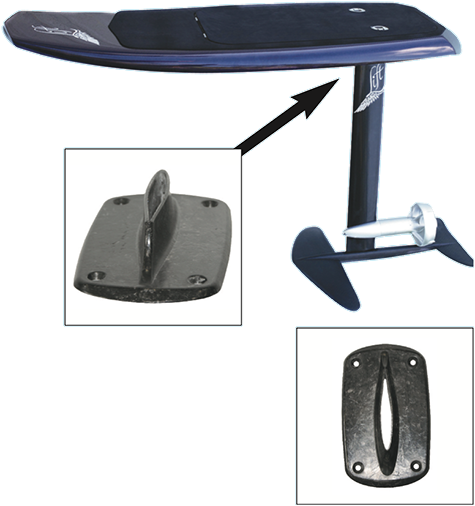Case Study


Hydrofoil Board Mast Base
inquiry
Hydrofoil Boards are growing increasingly popular with water sports enthusiasts. They combine the design and maneuverability of a surfboard with the speed of a motorized hydrofoil. The hydrofoil mast extends below the board and under the water, where a small motor provides enough speed to lift the board and rider off of the surface of the water. The mast is connected to the main board by use of a mast base that bears the stress of water resistance on the mast and the shifting weight of the rider’s balance. Due to their use, the mast base and foil board itself must be strong, lightweight and able to withstand the harsh environment of saltwater and prolonged UV exposure.
idea
Since metals are dense and degrade quickly when exposed to repeated immersion in water, they are not the best choice of materials for hydrofoil board components. IDI Composites International's new line of Ultrium™ however, was the perfect compliment for this unique product. Thermoset composites are naturally resistant to mild corrosive environments like saltwater and suffer no ill effects when repeatedly submerged. Additionally, they are strong enough to bear the constant flexural burden of a hydrofoil balancing a rider atop a two to three foot mast.
innovation
Performance wasn't the only factor to consider when IDI's 3i Composites Technology Center helped determine the right material solution for the job. Since the mast is a visible component of a foil board and the mast base connects the mast to the board, it needed to look good too. The natural choice to meet the requirements was IDI’sUltrium™ carbon fiber composite material. The use of a carbon fiber material ensures that the mast base on these boards not only provides more than enough strength for the heaviest of riders in the choppiest of water conditions, but that it also looks great!


